 by our College Data Analytics Team
by our College Data Analytics TeamLCAD total enrollment is approximately 782 students. 635 are undergraduates and 30 are graduate students.
Male/Female Breakdown of Undergraduates
The full-time LCAD undergraduate population is made up of 73% women, and 27% men.
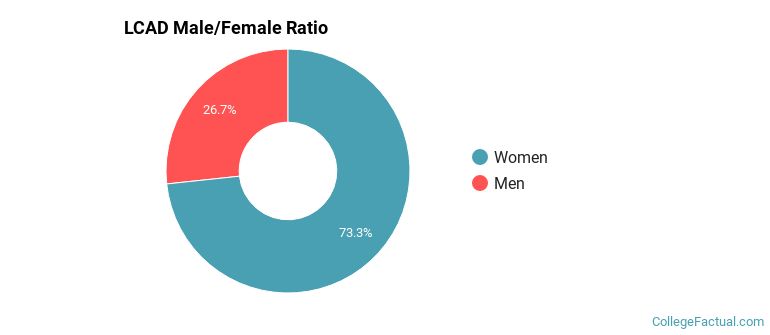
For the gender breakdown for all students, go here.
LCAD Racial/Ethnic Breakdown of Undergraduates

| Race/Ethnicity | Number |
|---|---|
| White | 303 |
| Hispanic | 135 |
| Asian | 98 |
| Multi-Ethnic | 49 |
| International | 27 |
| Black or African American | 14 |
| Native Hawaiian or Pacific Islander | 3 |
| Unknown | 3 |
See racial/ethnic breakdown for all students.
Male/Female Breakdown of Graduate Students
About 50% of full-time grad students are women, and 50% men.
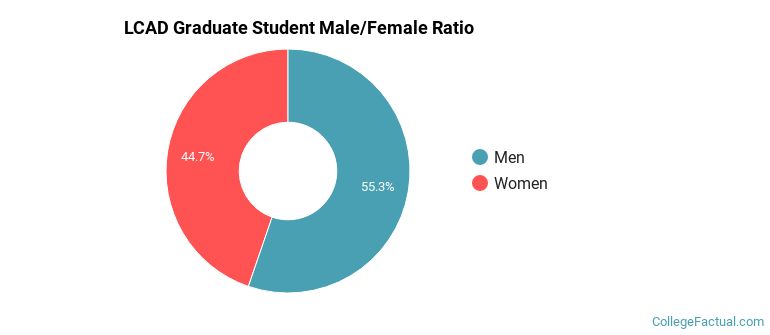
For the gender breakdown for all students, go here.
LCAD Racial-Ethnic Breakdown of Graduate Students
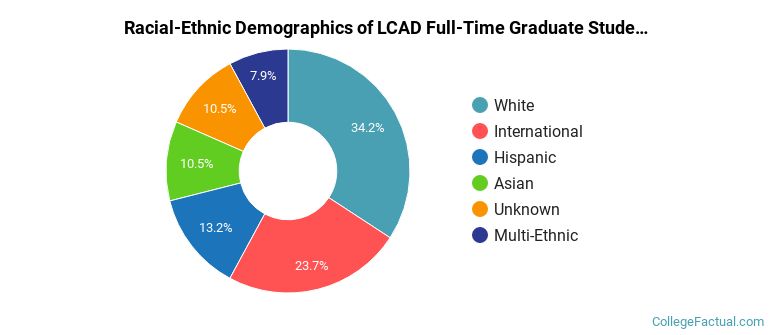
| Race/Ethnicity | Number |
|---|---|
| White | 13 |
| Hispanic | 5 |
| International | 5 |
| Multi-Ethnic | 4 |
| Asian | 3 |
| Black or African American | 0 |
| Native Hawaiian or Pacific Islander | 0 |
| Unknown | 0 |
See racial/ethnic breakdown for all students.
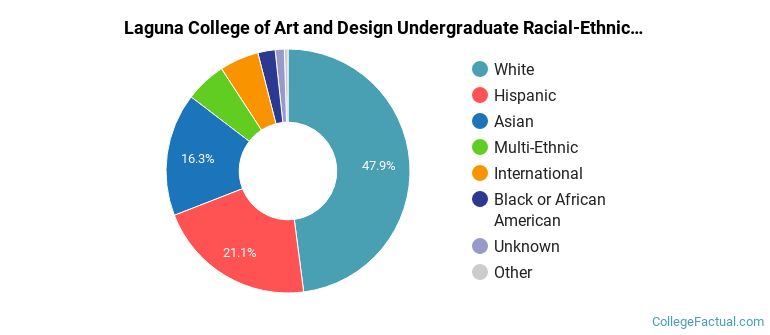
| Race/Ethnicity | Number |
|---|---|
| White | 375 |
| Hispanic | 165 |
| Asian | 117 |
| Multi-Ethnic | 59 |
| International | 39 |
| Black or African American | 16 |
| Native Hawaiian or Pacific Islander | 4 |
| Unknown | 4 |

There are approximately 560 female students and 222 male students at LCAD.
LCAD ranks 801 out of 2,183 when it comes to geographic diversity.
32.93% of LCAD students come from out of state, and 6.82% come from out of the country.

The undergraduate student body is split among 13 states (may include Washington D.C.). Click on the map for more detail.
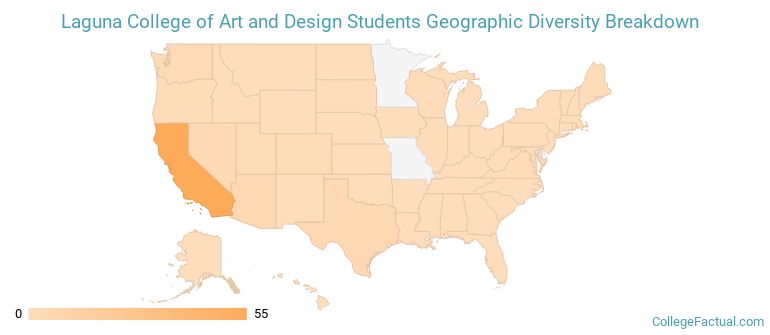
| State | Amount |
|---|---|
| California | 55 |
| Arizona | 5 |
| Texas | 5 |
| Nevada | 4 |
| Washington | 3 |
Learn more about international students at LCAD.
A traditional college student is defined as being between the ages of 18-21. At LCAD, 49.85% of students fall into that category, compared to the national average of 60%.
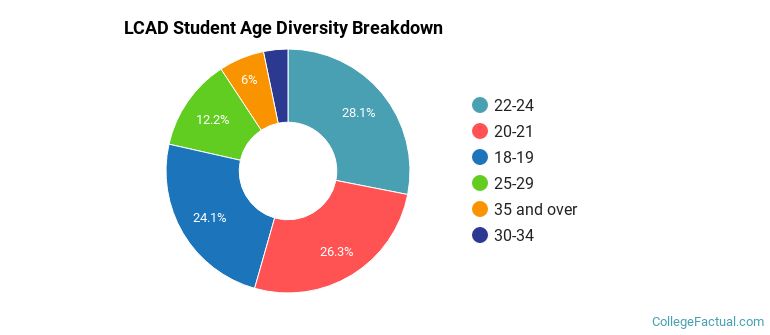
| Student Age Group | Amount |
|---|---|
| 22-24 | 191 |
| 20-21 | 179 |
| 18-19 | 164 |
| 25-29 | 83 |
| 35 and over | 41 |
| 30-34 | 22 |
| Under 18 | 0 |
Footnotes
*The racial-ethnic minorities count is calculated by taking the total number of students and subtracting white students, international students, and students whose race/ethnicity was unknown. This number is then divided by the total number of students at the school to obtain the racial-ethnic minorities percentage.
References
Department of Homeland Security Citizenship and Immigration Services
Learn more about how College Factual creates their Diversity Rankings.